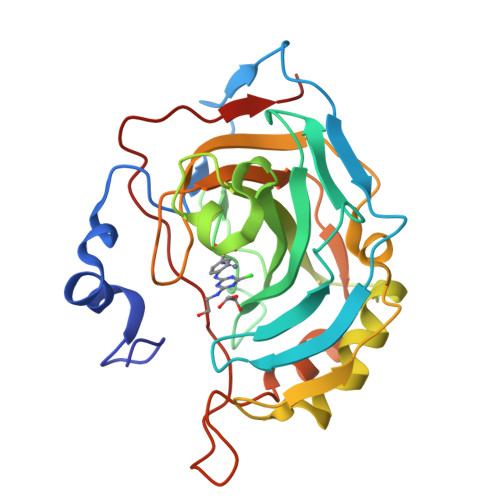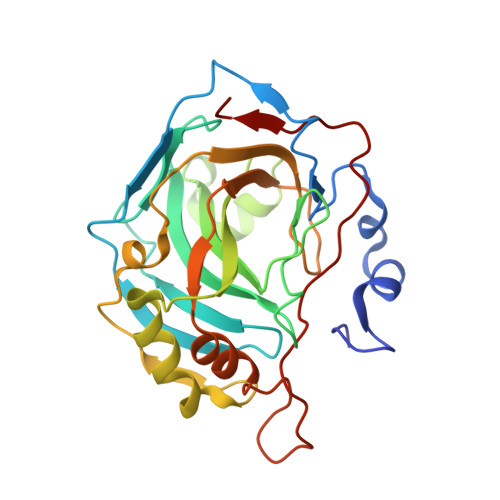Sulfonamides incorporating 1,3,5-triazine moieties selectively and potently inhibit carbonic anhydrase transmembrane isoforms IX, XII and XIV over cytosolic isoforms I and II: Solution and X-ray crystallographic studies.
Carta, F., Garaj, V., Maresca, A., Wagner, J., Avvaru, B.S., Robbins, A.H., Scozzafava, A., McKenna, R., Supuran, C.T.(2011) Bioorg Med Chem 19: 3105-3119
- PubMed: 21515057
- DOI: https://doi.org/10.1016/j.bmc.2011.04.005
- Primary Citation of Related Structures:
3MMF, 3MNA - PubMed Abstract:
Reaction of cyanuryl chloride with d,l-amino acids and amino alcohols afforded a new series of triazinyl-substituted benzenesulfonamides incorporating amino acyl/hydroxyalkyl-amino moieties. Inhibition studies of physiologically relevant human carbonic anhydrase (CA, EC 4.2.1.1) isoforms, such as CA I, II, IX, XII and XIV with these compounds are reported. They showed moderate-weak inhibition of the cytosolic, offtarget isozymes CA I and II, but many of them were low nanomolar inhibitors of the transmembrane, tumor-associated CA IX and XII (and also of CA XIV). The X-ray crystal structure of two of these compounds in adduct with CA II allowed us to understand the features associated with this strong inhibitory properties and possibly also their selectivity. Two of these compounds were also investigated for the inhibition of other human isoforms, that is, hCA IV, VA, VB, VI, VII and XIII, as well as inhibitors of the fungal pathogenic CAs Nce103 (Candida albicans) and Can2 (Cryptococcus neoformans), showing interesting activity. The 1,3,5-triazinyl-substituted benzenesulfonamides constitute thus a class of compounds with great potential for obtaining inhibitors targeting both α-class mammalian, tumor-associated, and β-class from pathogenic organisms CAs.
Organizational Affiliation:
Università degli Studi di Firenze, Polo Scientifico, Laboratorio di Chimica Bioinorganica, Florence, Italy.



















